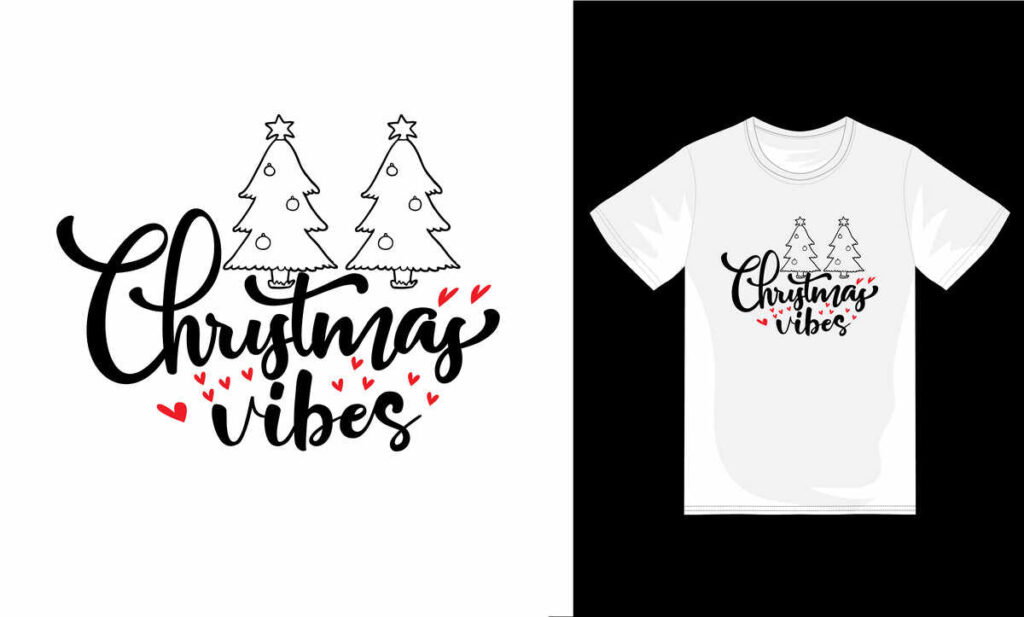The **DTF workflow** is transforming the fabric printing landscape, particularly in the realm of custom apparel. With its innovative approach to Direct-to-Film printing, this process stands out for its ability to produce intricate designs and vibrant colors on a variety of materials. By following the structured DTF printing steps, users can seamlessly transition from design creation to final product, ensuring quality and durability. As businesses continue to seek sustainable methods, the DTF printing process delivers not only superior aesthetics but also eco-friendly options. In this guide, we will explore the key components of the DTF workflow, equipping you with the knowledge to leverage this cutting-edge technology in your projects.
The process of **Direct-to-Film printing**, often referred to by industry insiders as DTF, is rapidly gaining traction among those in the custom garment sector. This technique enables the seamless transfer of designs onto textiles using a specialized film, making it a highly efficient choice for printing vibrant images with fine details. Employing the DTF printing methodology, businesses can enjoy the flexibility to work with various fabric types, thus expanding their product offerings. Moreover, the sustainability aspect of this printing method is garnering attention, as many printers are now adopting eco-friendly practices within the DTF workflow. In this article, we will delve into the various stages of the DTF printing process, providing insights on how to achieve professional-quality custom apparel.
Understanding the Benefits of DTF Printing
DTF printing offers a range of advantages that set it apart from traditional methods like screen printing and direct-to-garment (DTG) printing. One notable benefit is its ability to print on a wide variety of materials. Unlike screen printing, which requires specific fabrics, DTF printing can successfully transfer vibrant designs onto cotton, polyester, and even blends. This versatility is a game-changer for custom apparel businesses, allowing them to cater to diverse customer preferences without compromising quality.
Another significant advantage is the color vibrancy and detail achievable with DTF technology. The use of CMYK inks in the printing process allows for a broader color gamut and more intricate details in designs. This results in visually striking prints that stand out and are appealing to consumers. Moreover, with DTF printing, designs maintain their quality even after multiple washes, ensuring that the final product remains vibrant and eye-catching over time.
Key Steps in the DTF Printing Process
Understanding the DTF printing steps is crucial for anyone looking to dive into this exciting technology. The process begins with the creation of a high-resolution design using specialized software. This step is vital since the quality of the final print directly relates to the initial design. Following this, the design is printed onto a transfer film that is specifically designed to hold the printed images, preserving detail and color integrity.
The next step involves applying a hot-melt adhesive powder to the wet ink on the film. This adhesive is essential for ensuring the design adheres effectively during the transfer to fabric. After the adhesive is applied, the film goes through a curing process where heat solidifies the adhesive, helping to create a durable bond. Finally, the film is pressed onto the garment using a heat press, ensuring a long-lasting and vibrant design.
Exploring Custom Apparel with DTF Printing
The custom apparel industry has seen a significant shift towards DTF printing, owing to its ability to produce unique, high-quality designs. This method allows designers to experiment with various color combinations and intricate patterns, creating personalized garments that cater to individual tastes. From custom t-shirts to unique hoodies, the possibilities are virtually limitless, making DTF a favored choice for small businesses and independent designers.
Moreover, the speed of DTF printing allows for quick turnaround times, which is crucial in today’s fast-paced market. With the ability to produce small runs of customized apparel efficiently, businesses can respond quickly to changing consumer demands and trends. This flexibility is beneficial not just for artists and designers but also for businesses aiming to offer personalized merchandise or promotional items.
Sustainable Practices in DTF Printing
Sustainability has become a crucial consideration in the DTF printing process as businesses strive to reduce their environmental impact. The use of eco-friendly inks is becoming standard practice, minimizing harmful emissions and waste associated with traditional printing methods. This shift towards sustainable DTF printing not only meets consumer demand for environmentally responsible products but also positions businesses as leaders in the eco-conscious market.
Additionally, the DTF workflow allows for less fabric waste. By incorporating technologies that enable precise printing techniques, printers can accurately create designs without excess margins, which is a common issue in conventional methods. This not only conserves materials but also represents a commitment to sustainable practices that consumers increasingly look for when purchasing custom apparel.
Recent Advancements in DTF Technology
The DTF printing technology is evolving rapidly, leading to significant advancements that enhance its efficiency and effectiveness. Recent developments have focused on improving printer design and capabilities, allowing businesses to automate various steps, such as adhesive application. Such improvements mean that companies can produce high volumes of apparel within shorter periods, thereby boosting productivity and reducing operational costs.
In addition to production efficiency, technological advancements are also resulting in improved print quality. Newer models of DTF printers can handle higher resolutions and provide better color accuracy, which further elevates the quality of final products. These enhancements not only benefit businesses but also ensure that end consumers receive exceptional items that reflect the creativity and skill of their designers.
Maximizing Your DTF Workflow Efficiency
Improving your DTF workflow is key to achieving both consistency and quality in printed garments. One effective way to maximize efficiency is by investing in high-quality equipment tailored for DTF printing, such as advanced printers and heat presses. These investments can significantly reduce printing errors and downtime, allowing for a smoother workflow and ensuring your designs look their best every time.
Another crucial aspect is setting up an organized workspace that facilitates each step of the printing process. By ensuring that each stage – from design creation to final touches – is streamlined and well-coordinated, businesses can minimize wasted time and resources. Proper training for staff on DTF printing steps and equipment will also enhance overall efficiency, leading to superior final results and satisfied customers.
Frequently Asked Questions
What is the DTF workflow and how does it differ from traditional printing methods?
The **DTF workflow**, or Direct-to-Film printing process, involves several steps to transfer designs onto fabric more effectively than traditional methods. Unlike direct-to-garment printing, DTF allows for vibrant colors and intricate details on a variety of materials. This workflow includes design creation, film preparation, applying adhesive powder, curing, transferring to the garment, and final touches, enhancing both durability and print quality.
What are the key steps involved in the DTF printing process?
The **DTF printing steps** include: 1) Design Creation using software, 2) Film Preparation with special water-resistant film, 3) Powder Adhesive Application on the wet ink, 4) Curing with heat to solidify the adhesive, 5) Transfer to Garment using a heat press to bond the design, and 6) Final Touches to ensure durability. Each of these steps is crucial for achieving high-quality custom apparel.
What materials are compatible with DTF printing?
Recent advancements in **DTF printing technology** have significantly increased material compatibility. DTF can be used on various fabrics, including cotton, polyester, and blends, allowing for a wider range of applications in the custom apparel market. These capabilities make DTF a preferred choice for eco-friendly printing initiatives.
How does the sustainability aspect of DTF printing impact the industry?
The rise of **sustainable DTF printing** practices is reshaping the industry as many suppliers now provide environmentally friendly inks and materials. This shift reduces the ecological impact of the DTF workflow and meets consumer demand for greener practices. Companies focusing on sustainability are positioning themselves as leaders in the growing custom apparel market.
What advancements have been made in the DTF printing workflow recently?
**Technology improvements** in the DTF printing workflow include faster production times and enhanced print quality, with some new printers automating the adhesive application. These advancements streamline the entire DTF process, reduce labor costs, and enhance productivity, helping businesses meet increasing demands.
Where can I find resources or tutorials to improve my knowledge of DTF printing?
To deepen your understanding of the **DTF workflow**, several resources are available, such as the Printful guide on DTF printing, which offers step-by-step guidance, and various YouTube channels featuring tutorials. Industry blogs like ‘T-Shirt Magazine’ or ‘Printwear Magazine’ also provide insights and expert interviews to help refine your DTF printing process.
| Step | Description |
|---|---|
| 1. Design Creation | Creating high-resolution designs using software like Adobe Illustrator or CorelDRAW. |
| 2. Film Preparation | Printing the design on a special water-resistant film with high-quality DTF printers. |
| 3. Powder Adhesive Application | Applying hot-melt adhesive powder to the wet ink to ensure adhesion. |
| 4. Curing | Using heat to solidify the adhesive on the printed film before transfer. |
| 5. Transfer to Garment | Applying heat and pressure to bond the design to the fabric. |
| 6. Final Touches | Performing additional curing to enhance durability of the printed design. |
Summary
The DTF workflow represents a significant advancement in the printing industry, streamlining the process from design creation to delivering high-quality custom apparel. As it gains traction, understanding this workflow is key for businesses aiming to leverage its advantages, including versatility, improved quality, and sustainability. From the initial design stage to the final touches, each step is tailored to ensure a seamless transition from concept to product. By staying abreast of recent technological developments, such as enhanced material compatibility and automation, manufacturers can optimize their operations and meet the evolving demands of eco-conscious consumers. Embracing the DTF workflow not only elevates design quality but also opens avenues for innovation in custom garment production.



